Carbon Steel: The Kitchen Investment of a Lifetime
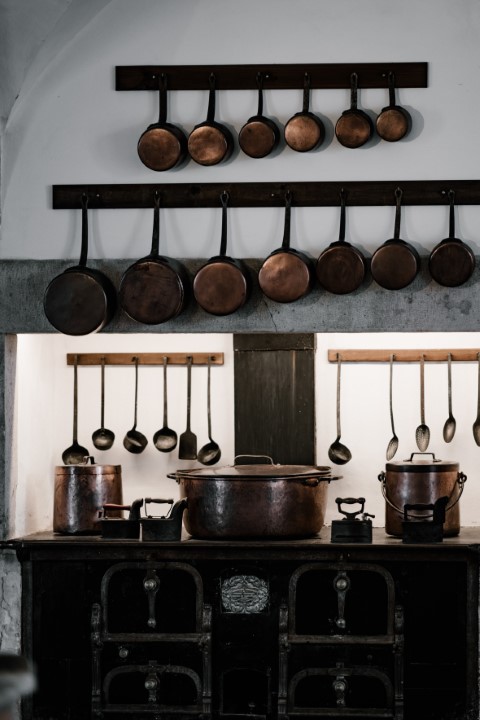
An Introduction to Carbon Steel
In addition, carbon steel pans are more lightweight and hard-wearing and heat up faster and more evenly than cast iron. They’re also easier to maneuver and are more durable than stainless steel, copper, and nonstick pans. Although they’re not as effective as stainless steel at retaining heat off the burner, they do maintain consistent heat while you’re cooking and can withstand temps up to 1200 F.
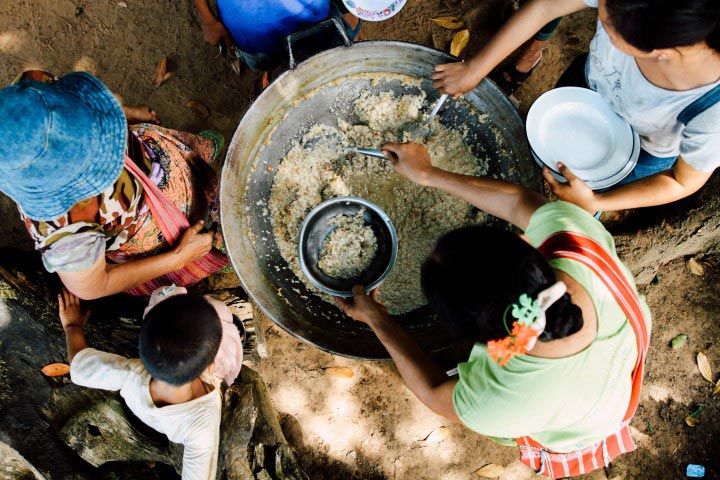
Maintenance
If maintained properly, carbon steel will last forever and will age gracefully. You don’t have to worry about using metal utensils as any scratches are cured with re-seasoning.
Disadvantages
Both carbon steel and cast iron pans compare to aluminum alloys are also relatively poor conductors of heat and consequently more prone to uneven heating patterns. They may be hot in the middle right over the burner but cold around the unheated perimeter. They’re also reactive metals that do not tolerate acidic or alkaline ingredients well.
Blue vs. Black Steel
Black carbon steel, in particular, has a black color that comes from black iron oxide. It is relatively stable and less prone to corrosion—making them essentially invincible. Compare to carbon steel that require bluing to form protective layer, black carbon steel pans could be seasoned straight away and used for cooking. Black iron oxide layer is sensitive to acidic food and can wear off if not seasoned properly.
Cast Iron vs. Carbon Steel
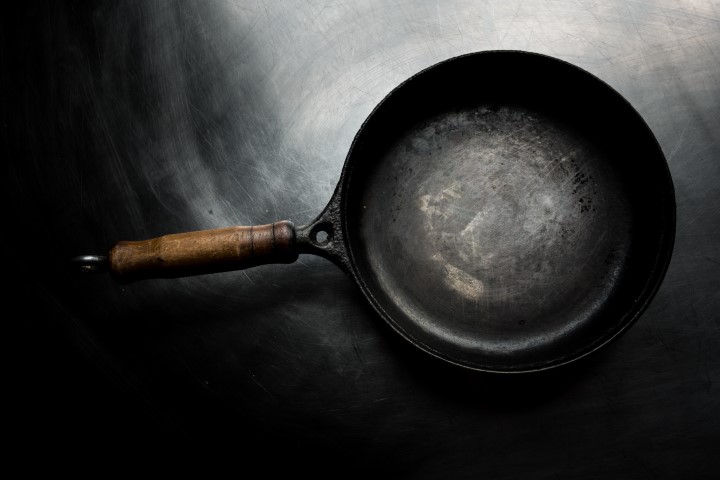
There are, however, minor differences. Carbon steel pans is more appealing as it’s made from sheets of metal which gives it a smoother surface that actually may be more nonstick than a seasoned cast iron pan.
Differences in design also make each more suitable for different dishes. For instance, cast iron skillets have vertical sides that are better for cooking chicken, cornbread or pizza while carbon steel pans have sloping sides that are better for sautéing. Because cast iron skillets are also thicker and heavier, they can heat food a bit more evenly than carbon steel, it’s also easier to sear meats in them. Carbon steel pans have sloped sides, making them more equipped for sautéing. Carbon steel, on the other hand, is lighter, so it’s easier to lift when tossing ingredients.
The grain structure, which determines how a pan performs and how it can be molded, is also a diverging factor between the two. The extra carbon in cast iron makes it more brittle as carbon tends to lump into carbides—a mixture of iron and carbon—or to form flat sheets of graphite (pure carbon) that disrupt the grain of the iron and make it more irregular, brittle, and weak. In comparison, with less carbon in their makeup, carbon steel pans have a uniform grain structure that makes the metal stronger and the pans lighter and more maneuverable. Carbon steel is pressed from raw, heavy-gauge steel and is extremely durable. Unfortunately, it rusts easily. Even ambient moisture in the air can cause rust in just a few minutes - which is why investing in a black carbon steel pan may be more pragmatic.
If you already own cast iron cookware, investing in carbon steel might be unnecessary; if you’re deliberating between the two, you’ll find both are affordable. Online prices can range quite a bit, but it’s best to avoid the cheapest ones as they could be made of excessively thin material.
However, nonstick and stainless steel cookware offer their own advantages—and drawbacks.
Nonstick

Stainless Steel Cookware
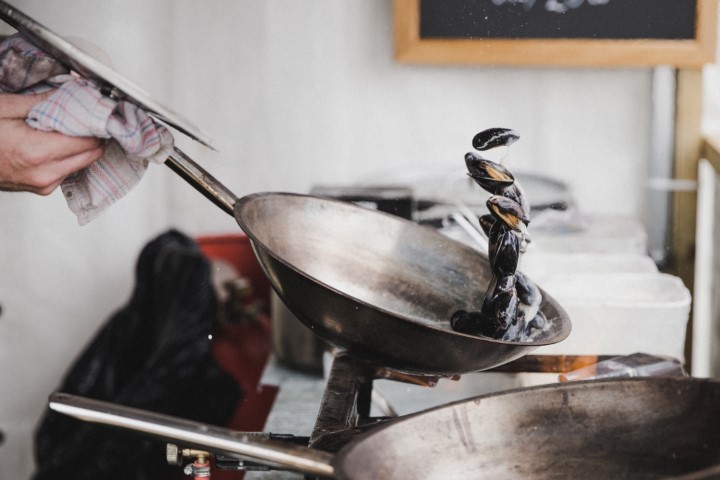
Overall, carbon steel cookware will provide you with the most bang for your buck. With their unparalleled ability to withstand heat and their sophisticated, lightweight, structure, carbon steel is not only a worthy investment, but one that you’ll be able to hang on your rack for a lifetime. Take a cue from the industrial kitchens of professional chefs and invest in yours today.
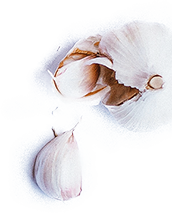




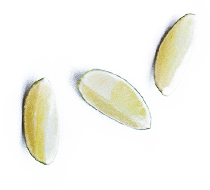

Recommended products
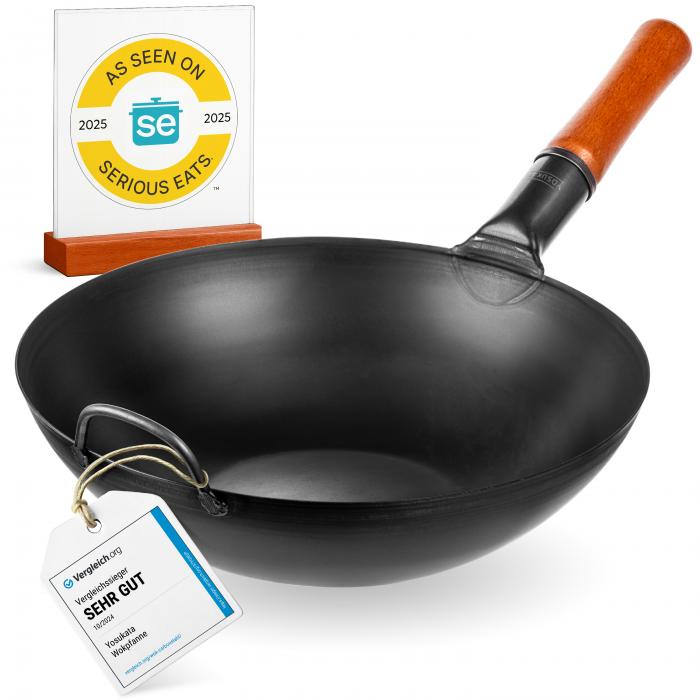
13,5-inch (34cm) Pre-Seasoned Black Carbon Steel Wok with Flat Bottom
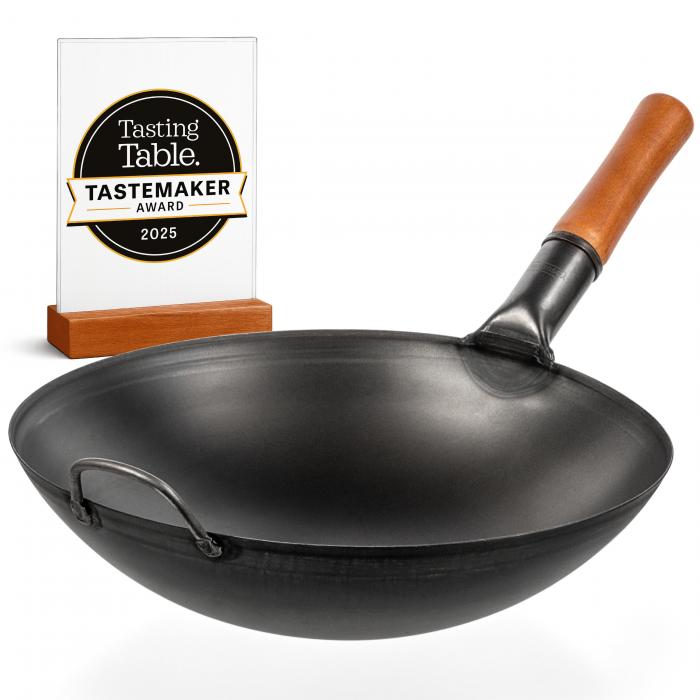
14-inch (36cm) Pre-Seasoned Black Carbon Steel Wok with Round Bottom
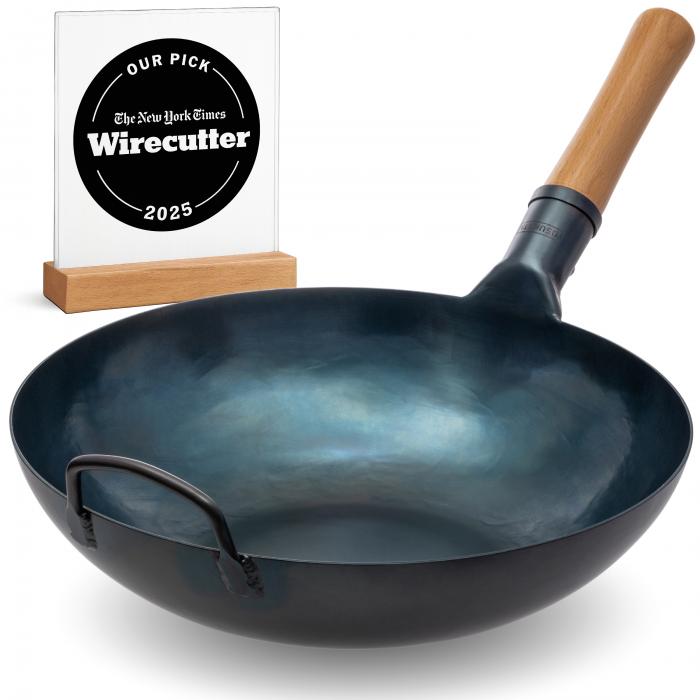
13,5-inch (34cm) Pre-Seasoned Blue Carbon Steel Wok with Flat Bottom





